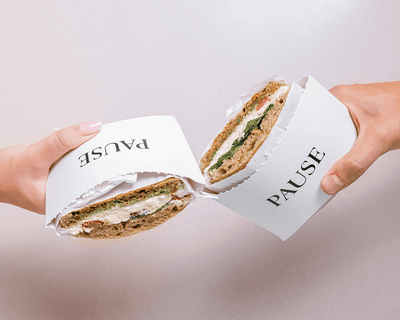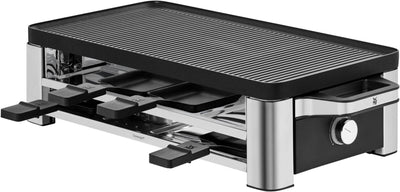A Guide to the Fondue Cheese
A Guide to Fondue Cheese: Discover Different Varieties and How to Enjoy Them
The idea of fondue conjures images of green valleys in the Alps and gatherings around giant pots of melted cheese after a full day of skiing.
The Uncertain Origin of Fondue
Fondue which means "melted" in French can be traced back centuries earlier to almost 800 BC, during the times of Homer’s Iliad. Literature from that era describes a mixture of goats or sheep’s milk cheese with wine and flour—that is extremely similar to today’s fondue!
According to others, however, fondue finds its origins in Switzerland, dating back to the late 17th century. It was born out of necessity during harsh Alpine winters when food was scarce. Resourceful Swiss villagers would melt down aged cheeses and dip stale bread into the creamy concoction, creating a meal that warmed both body and soul.
It comes as no surprise that fondue became instantly popular and was quickly embraced by the upper class as well.
What is Cheese Fondue?
Fondue is a delightful and communal dining experience that involves dipping bite-sized pieces of bread into a pot of hot of melted cheese, mixed with wine or brandy and herbs. The pot is continually kept warm over a small flame.

Which cheese to use for a fondue?
Fondue cheese is the star of the show, and there's a world of variety to choose from. Each type of fondue cheese brings its unique flavor and character to the table. Here are some popular choices:
-
Gruyère: Creamy, nutty, and slightly sweet, Gruyère is the quintessential choice for classic Swiss fondue.
-
Emmental: Known for its holes, Emmental cheese is mild and slightly nutty, making it an excellent complement to Gruyère in a traditional fondue blend.
-
Comté: Hailing from France, Comté cheese offers a rich and fruity flavor, perfect for those who enjoy a more intense cheese experience.
-
Appenzeller: This Swiss cheese packs a punch with its herbal and spicy notes, adding depth and complexity to your fondue.
The Fondue Savoyarde
Fondue Savoyarde, also known as Savoyard Fondue, originates from the Savoie region in the French Alps. This fondue is celebrated for its rich and indulgent flavors, which make it a favorite dish during the winter months in the Alpine region. The Fondue Sovayarde contains Comté, Emmental, and Beaufort.
Swiss Fondue Moitié-Moitié
Swiss Fondue Moitié-Moitié is a classic and perhaps the most traditional Swiss cheese fondue that's renowned for its simplicity and delightful flavors. The name "Moitié-Moitié" translates to "half-half" in French, which perfectly describes this fondue because it's made with an equal mixture of two exquisite Swiss cheeses: Gruyère and Vacherin Fribourgeois.
How to prepare a fondue?
Creating the perfect fondue cheese isn't rocket science, but it does require a bit of finesse and patience. Here's a simple recipe to get you started:
Ingredients:
- Cheese (which depends on the fondue you're going for)
- 1 garlic clove
- A dry white wine (you can definitely skip the wine if you'd like a wine-free fondue)
- A pinch of nutmeg
- Freshly ground black pepper
Instructions:
- Rub the inside of your fondue pot with the garlic clove, then discard the garlic.
- Pour the wine into the pot and heat it gently until it starts to simmer.
- Gradually add the cheese mixture, stirring in a figure-eight pattern until the cheese melts smoothly.
- Stir in the nutmeg, and black pepper.
- Serve with cubes of your favorite bread and enjoy!
What’s served alongside the fondue?
Crusty white bread cut into bite-size chunks for dipping, of course! For that perfect fondue experience, you'll want bread that can stand up to the gooey goodness of melted cheese. Crusty baguette cubes, hearty country bread, make excellent choices. However, one cannot use fresh bread. Fondue requires "stale" or "day-old" bread for two key reasons:
- Sturdiness: Overnight bread tends to be firmer and less soft than freshly baked bread. This sturdiness makes it ideal for dipping into the thick, melted cheese in a fondue pot. The bread doesn't disintegrate or become overly soggy, allowing you to enjoy a satisfying and stable dip.
- Absorption: Stale bread has had time to dry out slightly, which means it can absorb the melted cheese better. The drier texture of the bread allows it to soak up the cheese without becoming overly saturated, resulting in a balanced and flavorful bite.
Ensure the bread is cut into bite-sized pieces, ready for dipping into the bubbling pot of cheese!
Other accoutrements include cooked and diced potatoes, cornichons, and pickles.
Serving Tips
Creating a memorable fondue experience involves more than just the cheese. Here are some tips to elevate your fondue soirée:
-
Keep It Warm: Invest in a fondue pot with a heat source to maintain the ideal cheese-dipping temperature throughout your meal.
-
Dip with Finesse: Use long forks or skewers to dip your goodies into the cheese, and be sure to twirl them to avoid drips.
-
Share the Experience: Fondue is a communal meal meant to be enjoyed together. Gather around the table, share stories, and savor the flavors.
-
Enjoy the Crust: The cheese that sticks to the bottom of the pot forms a delicious crust called "la religieuse." Scrape it off and enjoy it as a flavorful treat.
-
Pair with Wine: A glass of crisp white wine or a light-bodied red can complement the richness of the cheese beautifully.
Fondue cheese is more than just a meal; it's a heartwarming experience that brings people together. Whether you're relishing the classic Swiss fondue or experimenting with your favorite cheeses, this culinary adventure promises to create cherished memories shared around a bubbling pot of cheese. So, gather your loved ones, choose your cheeses, and let the fondue fun begin! Cheers to warm, cheesy dreams and unforgettable moments.









